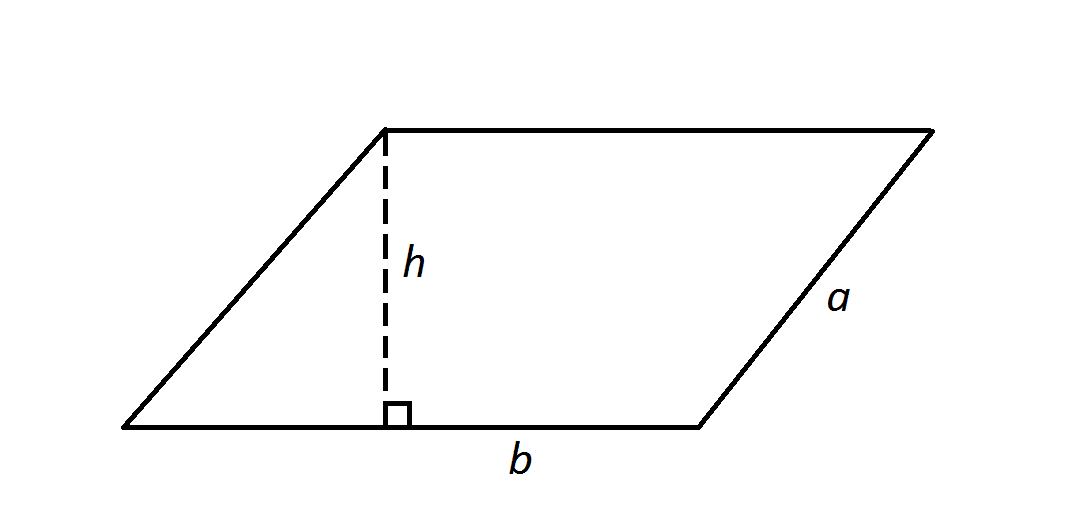All ISEE Middle Level Math Resources
Example Questions
Example Question #175 : Quadrilaterals
If a parallelogram has side lengths of 

The perimeter of a parallelogram is two times the two side lengths and add them together.
Therefore, this particular problem becomes as follows.

and

so

Example Question #123 : Geometry

Note: Figure NOT drawn to scale.




Find the perimeter of the parallelogram in the diagram.
The perimeter of the parallelogram is the sum of the four side lengths - here, that formula becomes

Note that the height 
Example Question #4 : Parallelograms
Find the area of the following parallelogram:
Note: The formula for the area of a parallelogram is 
The base of the parallelogram is 10, while the height is 5.
Example Question #3 : Parallelograms
Find the area:

The area of a parallelogram can be determined using the following equation:
Therefore,
Example Question #2092 : Isee Middle Level (Grades 7 8) Mathematics Achievement
You can solve the area of a parallelogram when you know the lengths of each of the sides. True or False?
The area of a parallelogram is found by computing 

Example Question #4 : Parallelograms
If a parallelogram has side lengths of 

Cannot be determined.
Cannot be determined.
To find the area of a parallelogram, you use the formula,

Since the height in this problem is not known, you cannot solve for area.
Example Question #181 : Quadrilaterals
Find the area of a parallelogram with a base of 6 inches and a height of 9 inches.
To find the area of a parallelogram, we will use the following formula:
where b is the base and h is the height of the parallelogram.
Now, we know the base has a length of 6 inches. We also know it has a height of 9 inches. Knowing this, we can substitute into the formula. We get
Example Question #2102 : Isee Middle Level (Grades 7 8) Mathematics Achievement
Find the area of the parallelogram with a base length of 6 and a height of 15.
Write the area formula of a parallelogram.
Substitute the dimensions into the formula.
The answer is:
Example Question #1 : How To Do Coordinate Geometry
Which of the following is a vertex of the square?

The coordinates of a point are determined by the distance from the origin. The first point in the ordered pair is the number of units to the left or right of the origin. Negative numbers indicate the number of units to the left while positive numbers indicate the number of units to the right. The second number indicates the number of units above or below the origin. Positive numbers indicate the number of units above while negative numbrs indicate the number of units below the origin. The vertices of the square are:
Example Question #431 : Hspt Mathematics
Which of the following points will you find on the 
A point is located on the 


Certified Tutor
Certified Tutor
All ISEE Middle Level Math Resources



























































